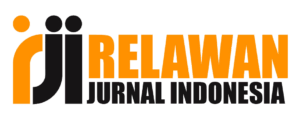Imbedding Gender Issues in English Materials for University Students
Abstract
Gender inequality becomes one of the most challenging issues all over the world because it is one of Sustainable Development Goals (SDGs) targets and Education for All (EFA) goals to reduce gender inequality in society. Education has a pivotal role in reducing and solving social problems because education through the teaching and learning process and the materials available could shape students’ minds and perspectives. Consequently, selecting good values and vibes in the materials are needed. Most textbooks are concerned with skills and cutting-edge technology issues. One of the illustrations is English textbooks for computer science that focus on how to be a good programmer and game developer but the materials neglect the social values, contexts, and function. The aim of this study is to develop English materials gender-based content for Computer science students as well as to promote gender equality to students. The method of this study is Research and Development (R&D) proposed by Gall, Gall, & Borg. The instruments are classified into two aspects namely questionnaire and interview. It is expected that the materials developed could reduce gender inequality in the academic environment because, through textbooks or materials, teachers are able to change the students’ perspectives and behaviors. The research results show that the students believe that the materials based on gender content can encourage them to learn English and they are enthusiastic to learn the subject.
References
Afitska, O. (2016). Scaffolding learning: developing materials to support the learning of science and language by non-native English-speaking students. Innovation in Language Learning and Teaching, 10(2), 75–89. https://doi.org/10.1080/17501229.2015.1090993
Ahmad, M., & Shah, K. (2019). A Critical Discourse Analysis of Gender Representations in the Content of 5th Grade English Language Textbook. International and Multidisciplinary Journal of Social Science, 8(1), 1–24. https://doi.org/10.17583/rimcis.2019.3989
Andi, K., & Arafah, B. (2017). Using Needs Analysis To Develop English Teaching Materials in Initial Speaking Skills for Indonesian College Students of English. The Turkish Online Journal of Design, Art and Communication TOJDAC, Special Ed(September), 419–436. https://doi.org/10.7456/1070ASE/045
Araujo, N. (2018). Engendering cosmopolitanism: Gendered narratives of instability and agency. Women’s Studies International Forum, 67(2016), 102–109. https://doi.org/10.1016/j.wsif.2017.06.001
Botelho, M. J., & Marion, R. (2020a). Representing Spanishes: Language Diversity in Children’s Literature. Journal of Latinos and Education, 00(00), 1–16. https://doi.org/10.1080/15348431.2020.1763353
Botelho, M. J., & Marion, R. (2020b). Representing Spanishes: Language Diversity in Children’s Literature. Journal of Latinos and Education, 19(3), 1–16. https://doi.org/10.1080/15348431.2020.1763353
Brown, L., & Park, M. Y. (2020). Culture in language learning and teaching. Teaching Korean as a Foreign Language: Theories and Practices, 5(1), 81–108. https://doi.org/10.4324/9780429244384-5
Burns, A. (1998). Critical Questions in Action Research. In A. Burns & S. Susan (Eds.), In Teachers’ Voices Teaching Critical Literacy. National Centre for English Language Teaching and Research.
Byrnes, H. (2006). Advance Language Learning: The Contribution of Halliday and Vygotsky. In London: Continuum. Continuum.
Callahan, S., & Nicholas, L. (2018). Dragon wings and butterfly wings : implicit gender binarism in early childhood early childhood. Gender and Education, 0(0), 1–19. https://doi.org/10.1080/09540253.2018.1552361
Choudhury, R. U. (2014). The Role of Culture in Teaching and Learning of English as a Foreign language. Express, an International Journal of Multi Disciplinary Research, 1(4), 1–20. www.ecpress-journal.com
Gallagher, K., & Sahni, U. (2019). Performing care: re-imagining gender, personhood, and educational justice. Gender and Education, 31(5), 631–642. https://doi.org/10.1080/09540253.2019.1609652
Hickerson, K., Hawkins, L. A., & Hoyt-Brennan, A. M. (2018). Sexual Orientation/Gender Identity Cultural Competence: A Simulation Pilot Study. Clinical Simulation in Nursing, 16, 2–5. https://doi.org/10.1016/j.ecns.2017.10.011
Hosseini, M., & Tammimy, Z. (2016). Recognizing users gender in social media using linguistic features. Computers in Human Behavior, 56, 192–197. https://doi.org/10.1016/j.chb.2015.11.049
Huang, S. (2018). Postfeminist influences on fairy tales , real and imagined : a critical media literacy classroom investigation. Gender and Education, 0(0), 1–17. https://doi.org/10.1080/09540253.2018.1467002
Kerkhoven, A. H., Russo, P., Land-Zandstra, A. M., Saxena, A., & Rodenburg, F. J. (2016). Gender stereotypes in science education resources: A visual content analysis. PLoS ONE, 11(11), 1–13. https://doi.org/10.1371/journal.pone.0165037
Koller, V. (2018). Language awareness and language workers. Language Awareness, 27(1–2), 4–20. https://doi.org/10.1080/09658416.2017.1406491
Lee, C., Yeung, A. S., & Ip, T. (2016). Use of computer technology for English language learning: do learning styles, gender, and age matter? Computer Assisted Language Learning, 29(5), 1033–1049. https://doi.org/10.1080/09588221.2016.1140655
Lee, J. F. K. (2014). A hidden curriculum in Japanese EFL textbooks : Gender representation. Linguistics and Education, 27, 39–53. https://doi.org/10.1016/j.linged.2014.07.002
Majid, A., & Fateme, E. (2015). Language and gender : A critical discourse analysis on gender representation in a series of international ELT textbooks. International Journal of Research Studies in Education, 4(2), 3–12.
Marin-velasquez, M., & Closson-pitts, B. (2019). Forging the ideal educated girl : the production of desirable subjects in Muslim South Asia. Gender and Education, 31(4), 560–561. https://doi.org/10.1080/09540253.2019.1583322
Mat, M. L. J. Le, Kosar-altinyelken, H., Bos, H. M. W., & Volman, M. L. L. (2018). International Journal of Educational Development Discussing culture and gender-based violence in comprehensive sexuality education in Ethiopia. International Journal of Educational Development, August, 1–9. https://doi.org/10.1016/j.ijedudev.2018.08.004
Moradimokhles, H., & Hwang, G. J. (2020). The effect of online vs. blended learning in developing English language skills by nursing student: an experimental study. Interactive Learning Environments, 0(0), 1–10. https://doi.org/10.1080/10494820.2020.1739079
Mubar, M. K. N. A. (2015). Developing English Learning Materials for Young Learners Based on Needs Analysis at MTSN Model Makassar. ETERNAL (English, Teaching, Learning, and Research Journal), I(02), 257–269. http://journal.uin-alauddin.ac.id/index.php/Eternal/article/view/2416
Mustapha, A. S. (2013). Gender and Language Education Research: A Review. Journal of Language Teaching and Research, 4(3), 454–463. https://doi.org/10.4304/jltr.4.3.454-463
Namatende-Sakwa, L. (2019). Networked texts: discourse, power and gender neutrality in Ugandan physics textbooks. Gender and Education, 31(3), 362–376. https://doi.org/10.1080/09540253.2018.1543858
Orfan, S. N. (2021). High school English textbooks promote gender inequality in Afghanistan. Pedagogy, Culture and Society, 00(00), 1–16. https://doi.org/10.1080/14681366.2021.1914148
Perempuan, K. (2020). Perempuan Dalam Himpitan Pandemi : Lonjakan Kekerasan Seksual,Kekerasan Siber,Perkawinan Anak,Dan Keterbatasan Penanganan Ditengah Covid-19. In Komisi Nasional ANti Kekerasan Terhadap Perempuan (Vol. 0, Issue 0).
Pradana, S., & Ashadi, A. (2019). Weblog as an Appropriate Online Medium in Teaching Writing. Script Journal: Journal of Linguistic and English Teaching, 4(2), 125. https://doi.org/10.24903/sj.v4i2.331
Shah, P., & Khurshid, A. (2019). Muslim womanhood, education, and empowerment: ethnographic reflections from Pakistan and India. Gender and Education, 31(4), 458–474. https://doi.org/10.1080/09540253.2018.1543859
Si, J. (2019). English as a native language, World Englishes and English as a lingua franca-informed materials: acceptance, perceptions and attitudes of Chinese English learners. Asian Englishes, 21(2), 190–206. https://doi.org/10.1080/13488678.2018.1544700
Tarrayo, V. N., & Anudin, A. G. (2021). Materials development in flexible learning amid the pandemic: perspectives from English language teachers in a Philippine state university. Innovation in Language Learning and Teaching, 0(0), 1–12. https://doi.org/10.1080/17501229.2021.1939703
Wells, S., & Moon, B. (2021). Towards an anatomy of English textbooks: counting what counts as English. English in Education, 55(1), 70–94. https://doi.org/10.1080/04250494.2019.1687259
Zhu, G., Iglesia, P. M., & Wang, K. (2020). Examining Chinese and Spanish preservice teachers ’ practicum teaching experiences : a transformative learning perspective. Journal of Education for Teaching, 00(00), 1–5. https://doi.org/10.1080/02607476.2019.1708623.

This work is licensed under a Creative Commons Attribution 4.0 International License.













